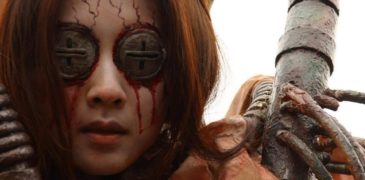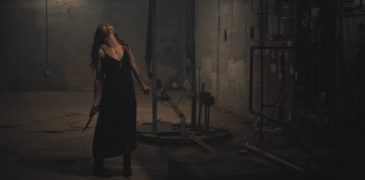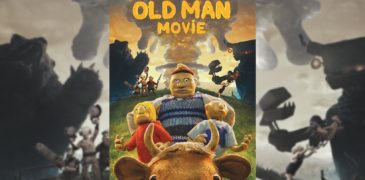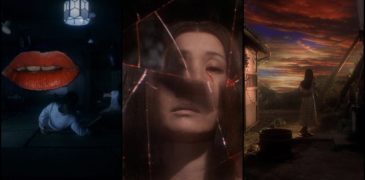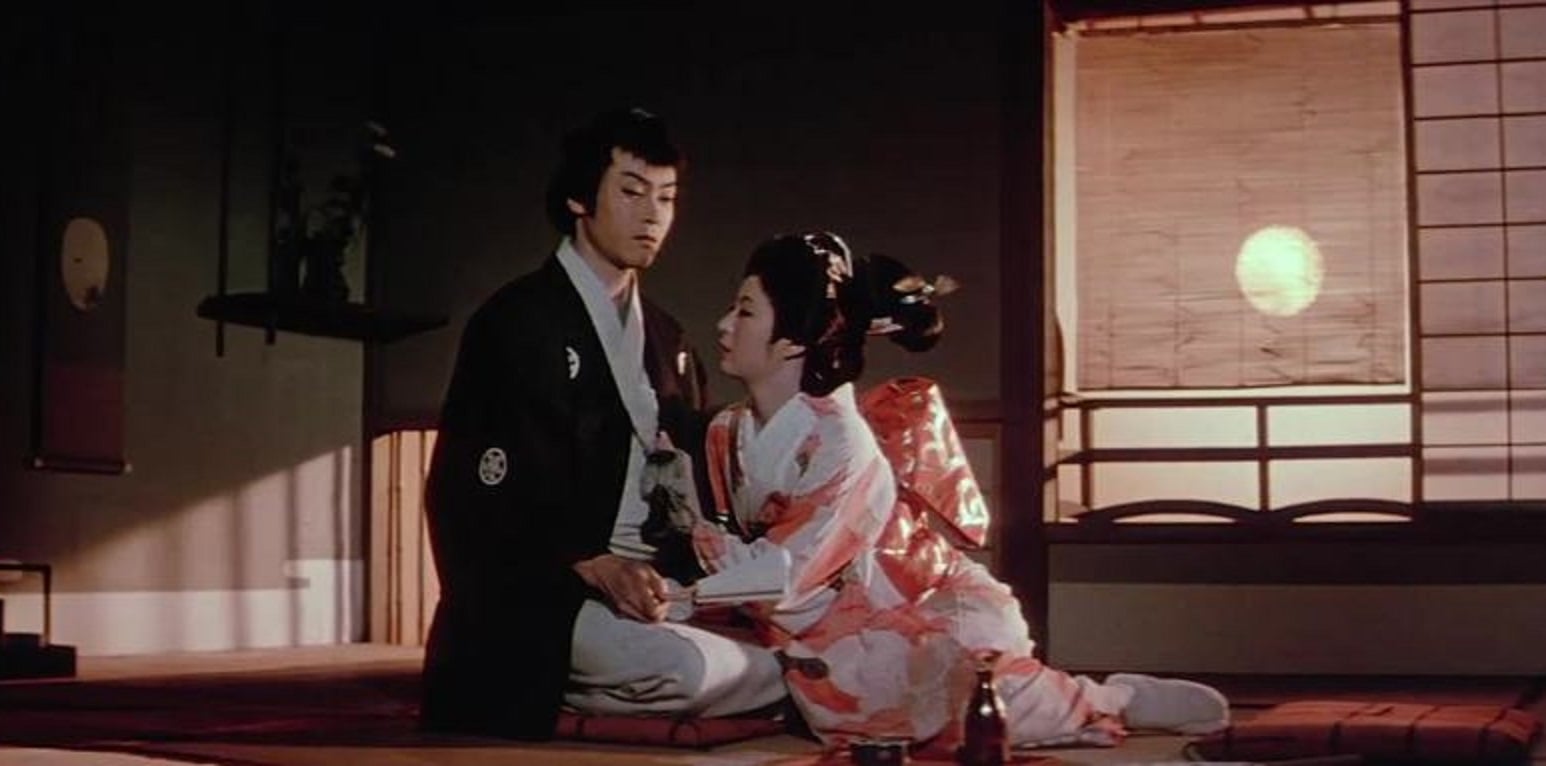
Modern-day J-horror traces its origins back to Japanese folklore and Kabuki plays, The Ghost of Yotsuya can be seen as an intermediate stage in the development of the field itself.
In the movie, our protagonist is a rather short-tempered and gullible young rōnin named Iemon. It is early 19th century Japan and he is living in poverty in the company of his loving wife, Oiwa. Dissatisfied and disappointed, he resolves to murder her in order to re-marry into better opportunities, but little does he know his deceased wife will return as an onryō to haunt him.
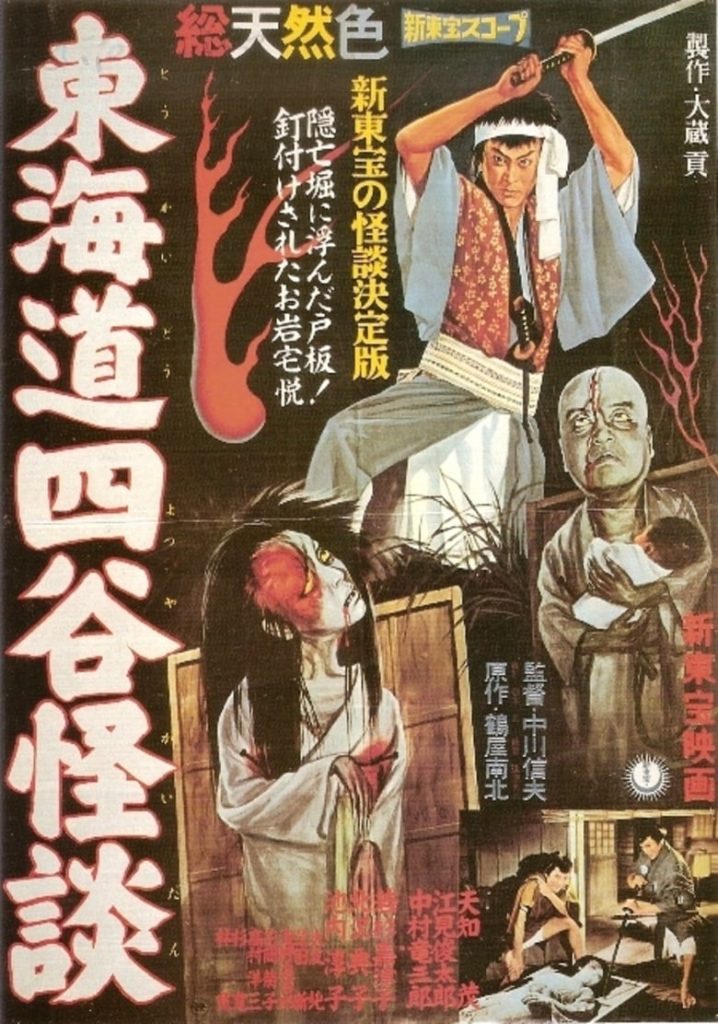
The storyline might be simplistic but it comes with an array of complex characters. Oiwa is a sweet, good-natured soul but she is also naïve, culminating in her unjust downfall. Her sister, Osode, although as good-natured as Oiwa, is more wise of the world, weary and insightful. Similarly, Iemon has a moral compass somewhere, but he is easily manipulated and led astray by his scheming servant, Naosuke, who acts to corrupt him.
The movie is based on a 19th-century Kabuki play known as Yotsuya Kaidan, an extremely popular theater experience in that era. The performances were so influential that Oiwa, the vengeance-seeking ghost of the story, was forever inserted into the cultural history as a salient figure in Japanese folklore. She is depicted as wearing a long, white gown as a burial kimono as an archetype for yūrei in future cinema as a motif. Her face is deformed and her left eye is drooping, both adverse effects of the insidious poisoning from Iemon.
The popularity of the play (and Oiwa as a figure) extended into the age of cinema as well from being firmly rooted in Japanese history. The play boasts of 30 movie adaptations as a lasting legacy proving no matter how society evolves, it will be adapted as respect for the cultural heritage. This version, The Ghost of Yotsuya by filmmaker Nobuo Nakagawa, is considered the definitive version – the most liked and best produced.
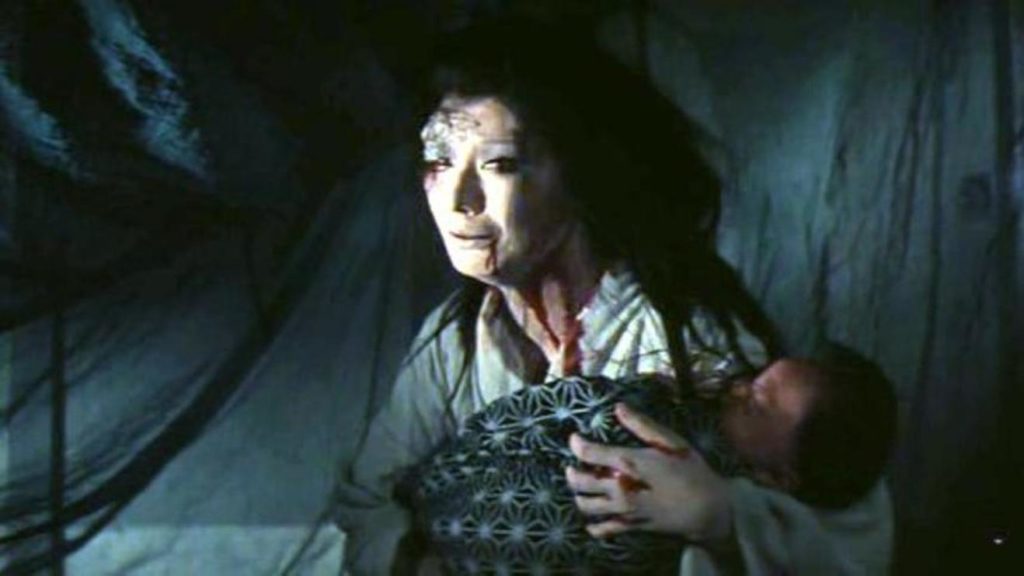
The movie intriguingly does not shy away from its stage origins. The acting, the sets, the make-up, etc., are all decidedly theatrical. I think it was a deliberate choice on the part of the director, a more artificial look as a homage. I found it fascinating as I felt I was getting a glimpse of the Japanese theatre from a bygone era, however! I could be entirely mistaken and those plays may not have corresponded to the setup of this film.
If you like taking a look into the history of J-horror, this is the movie for you. You could have fun comparing Oiwa’s look to Sadako/Samara’s of the Ringu/Ring series and her tragic backstory to that of Kayako’s from Ju-on/Grudge series.
This is a guest article from ‘Movie Meows’
You can follow on Facebook or check out the YouTube channel for more film insights!
More Reviews:
One of the many perks of Blu-Ray re-releases is the granted ability to revisit a film that you otherwise might not have, or in some cases, the chance to check… Inspired by Nanami Kamon’s original novel, Room 203 is Ben Jagger’s new film that explores one of the most memorable horror genre staples: the haunted property. This trope is always… The Sergio Blasco Gore Collection is an anthology of four extreme splatter films all created by the Spanish director – Including Burrp (1996), Mas Carnaza (1997), Plano Detalle (2008), and… Directors Justin Benson and Aaron Moorhead blew me away with the debut film Resolution, an eerie tale marked by a foreboding sense of doom. Their follow-up film, Spring, I will admit being… The Old Man: The Movie (Vanamehe film) is a 2019 Estonian stop-motion animation, written and directed by Oskar Lehemaa and Mikk Mägi with additional writing from Peeter Ritso. The film… Nobuhiko Obayashi’s House (1977) is memorable as a haunted house movie that defines itself through a whimsical absurdity forming a reality independent from any conventional filmmaking. It presents a cartoonish…Meatball Machine (2005) Movie Review: Terracotta Special Edition Blu-Ray
Room 203 (2022) Film Review: Friendship Brings Fresh Air to a Haunted Room
The Sergio Blasco Gore Collection (2024) Film Review – Extreme Spanish Cinema
Synchronic (2020) Film Review: Everyone In The Past Wants To Stab You
The Old Man: The Movie (2019) Film Review – “Adventures, Robots, Explosions”
House (1977) Film Review – Nobuhiko Obayashi’s Horror Comedy With Family Tones
